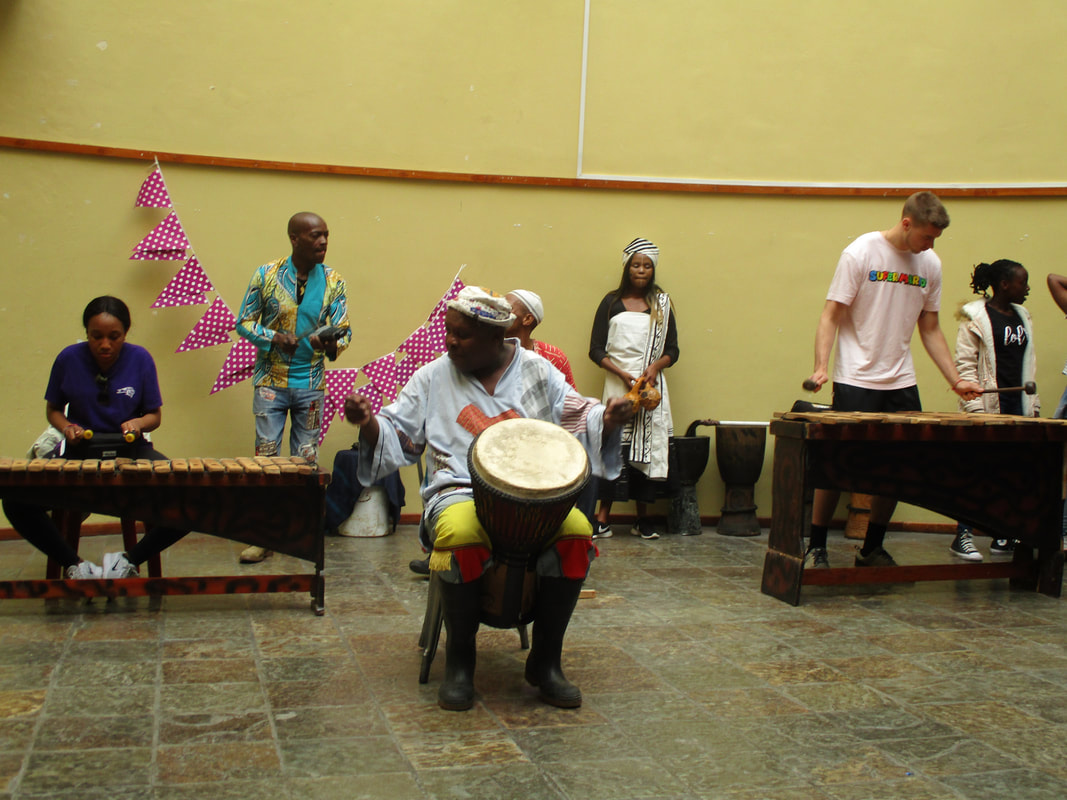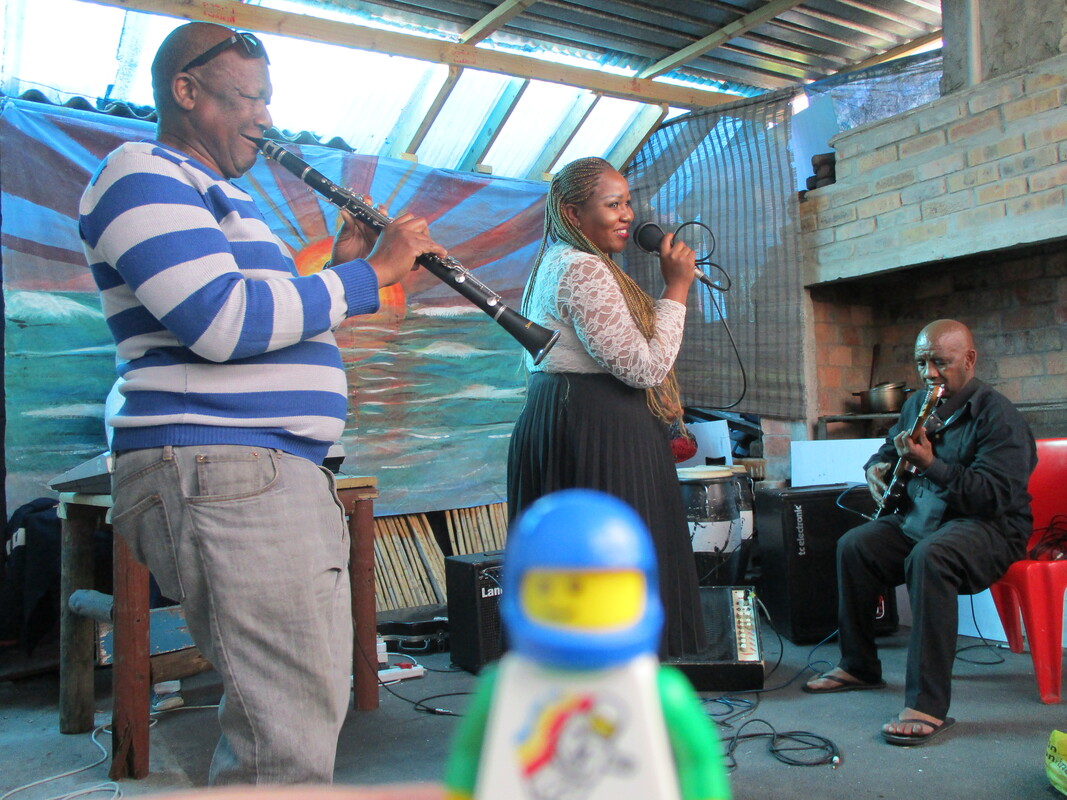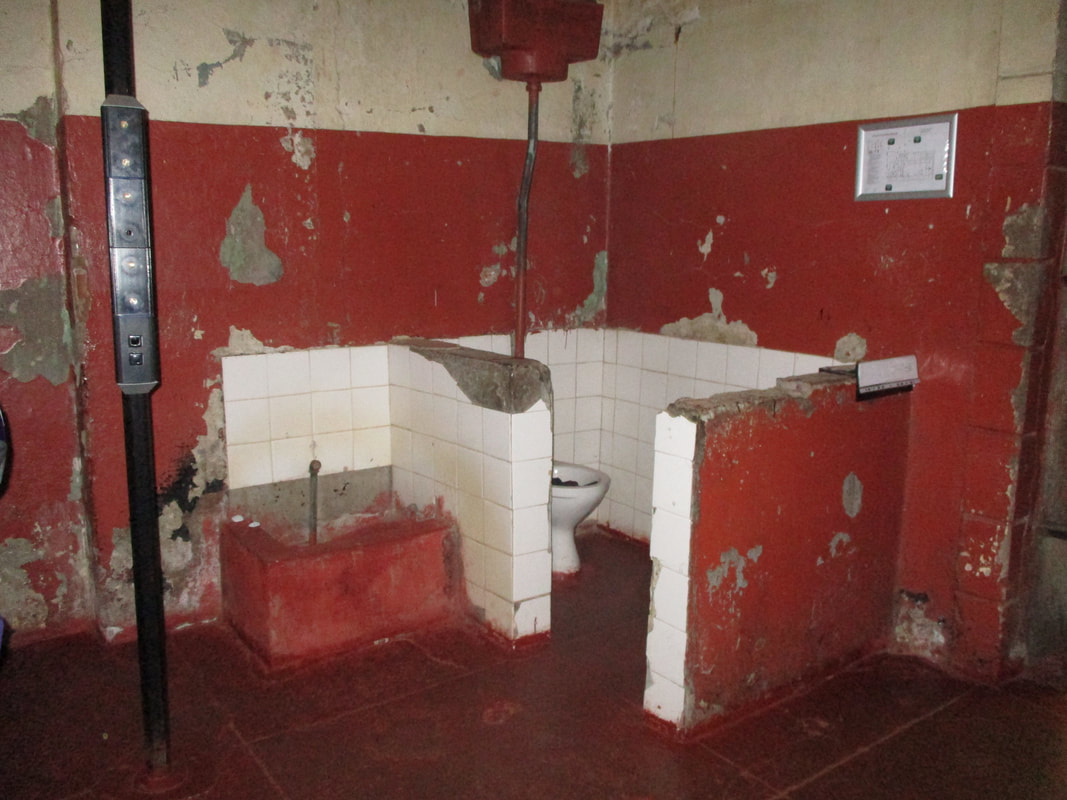|
Dr. Katherine Kirby (Philosophy and Global Studies) and Associate Professor Traci Griffith, JD (Media Studies, Journalism, & Digital Arts) planned a trip to South Africa to study the philosophy of the Apartheid, power, resistance, and liberation. They focused on the role of the media in shaping, maintaining, and eventually overthrowing the Apartheid system in South Africa. Students were encouraged to explore comparisons and contrasts between South Africa and the United States, in terms of racial oppression, resistance movements, and the power of media in shaping understanding and society. Here is a link to their blog : https://smcsouthafrica2k19.home.blog/ This LEGO Travel Buddy has been named "Umhambi". In Xhosa tradition, people are given names that mean something about their personality. “Umhambi” means “one who travels.” Learn about Umhambi's Adventure from Dr. Katherine Kirby: Here are some more pics of Umhambi in Khayelitsha, beginning with his friends, Jason Heter and Jontai Williams, two St. Mike’s student-athletes on our Men’s Basketball team. Jason is a sophomore Media Studies, Journalism, & Digital Arts major from Andover, New Jersey. Jontai is a first-year student from the Bronx, New York, studying business and exploring lots of subjects to select his major. This picture is taken from Look Out Hill, which gives a great vantage point for seeing all of Khayelitsha.
In these photos Umhambi is visiting Liliesleaf, which was a farm and safehouse in Rivonia, just outside of Johannesburg. In 1961, Arthur Goldstein and Harold Wolpe bought Liliesleaf farm, and Goldstein and his wife and children moved in. From the outside, this was a farm like any other – owned by white South Africans, with black farm workers employed and sometimes living in small cottages on the property. In reality, Liliesleaf was a hideout and a safe house for the liberation fighters, including Nelson Mandela, who were wanted by the police for their efforts to fight against Apartheid discrimination. Mandela and 19 others were captured during a raid of Liliesleaf in 1963, leading to the famous Rivonia trial, which was the beginning of his 27 year imprisonment. In these pictures, you can see the cottage where Nelson Mandela lived and letters written by children, thanking him for fighting for the liberation of South Africans. Umhambi in Khayelitsha, the 2nd largest black township in all of South Africa. It was formed in the 80’s, as a last attempt to enforce the Apartheid government’s Group Areas Act of 1950, which was a law that segregated people into different areas based on their racial classification. Many people were forcibly removed from their homes and relocated to Khayelitsha. Our Program Faciliator, whose name is Thulani, currently lives in Khayelitsha. These photos are from his Mom’s house, because she hosted us for dinner and breakfast, serving us DELICIOUS local dishes. Yum! We were in Khayelitsha for two days, staying overnight at a Bed & Breakfast. And we were fortunate to be welcomed by her Assembly of God congregation on Sunday morning for a lively and music-filled 2.5 hour church service. "I have never danced so much during a church service or been hugged by so many people I didn’t know" said Dr. Katherine Kirby. Part of Khayelitsha includes “formal settlements,” with electricity, plumbing, and authorized plots of land for residents. The other part is “informal settlement,” or “squatter camps,” where people who need a place to live come and put up a shack, hoping that they will not be forcibly removed. Such areas do not have plumbing or electricity, and the police will frequently tear down the small homes that people build. Unfortunately, there is nowhere else for people to go. It’s important to remember that it was government policy that displaced so many people who were black or mixed-race, because the Apartheid government believed that people of different races should not live together in the same areas. Many people who were black, mixed race, or Indian were forced to leave their homes and move elsewhere so that the land could be given to white South Africans. These ideas about race still cause discrimination in South Africa, and as these pictures show, the result is lots of inequality and struggle for people who aren’t white. The purpose of our class was to learn about this, and to study the resistance movement that eventually overturned the Apartheid government. Umhambi enjoyed a drumming lesson in Langa township. Langa is the oldest black township in South Africa. It was established in 1927 after the 1923 Urban Areas Act. During this drumming lesson, the students and professors learned basic drumming rhythms and jammed with local musicians from Langa. It was SO MUCH fun for all! Next the students attended a Jazz concert in the backyard of an artist in Langa. The band is a famous local Jazz band in Langa. They also got to meet with Themba Fassie (the brother of VERY famous Jazz artist, the late Brenda Fassie), and he accompanied us to this concert. Here we have our tour guide, Thulani, explaining the principles of the Freedom Charter that guided the constitution that was created by the new democratic government that took over after the Apartheid government was defeated. In these photos, Umhambi visits the Voortrekker Monument in Pretoria, the capital of South Africa. The Voortrekkers were white Afrikaner South Africans, which means they were the descendents of the Dutch. When the English defeated the Dutch and took control of the colony of South Africa, the Afrikaners fled north to what is now Pretoria. They battled the Zulus who were there first, massacring many of them including their leader. Eventually, the English agreed that the Afrikaners could have that Zulu land. The monument memorializes that trek. At Constitution Hill, he saw the brutal men’s prison where many liberation fighters were held. Even within the prison, there was racial discrimination. White prisoners were not even held in the same prison as black, Indian, and mixed-race people. And within this prison for non-whites, there were different (worse) meal allotments for blacks than there were for mixed-race or Indian inmates. Our last stop was Pilansburg National Park, where we stayed at the Bakgatla Safari Lodge. Our purpose in traveling to South Africa was to study oppression and the fight for liberation, NOT to go on safari. But how could we be so close to all these gorgeous animals and not take a moment to see them? In these photos, you can see Umhambi at Bakgatla. Our safari driver said our rhino encounter was very rare. He said that baby was only a few days old!! We saw white rhinos, black rhinos (which are nearly extinct), giraffe, zebras, kudu, springbok, hippos, and lots of others. WOW! What an adventure! *NMS Library would like to thank Dr. Kirby and the students of St. Michael's College for sharing their adventure with us! This was a remarkable journey and has inspired us to support a mini-lesson on the Apartheid for next school year.
1 Comment
10/11/2023 08:18:07 am
Your article was a masterclass in content creation. The attention to detail, the depth of analysis, and your writing prowess were impressive. I look forward to your future contributions.
Reply
Leave a Reply. |
Proudly powered by Weebly



























